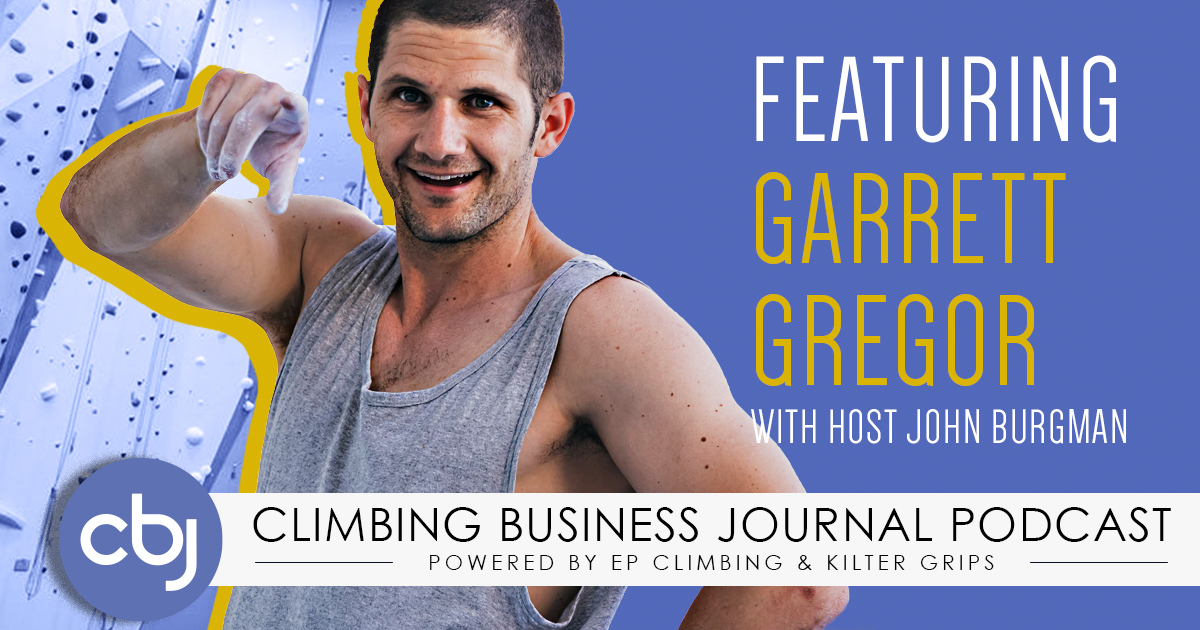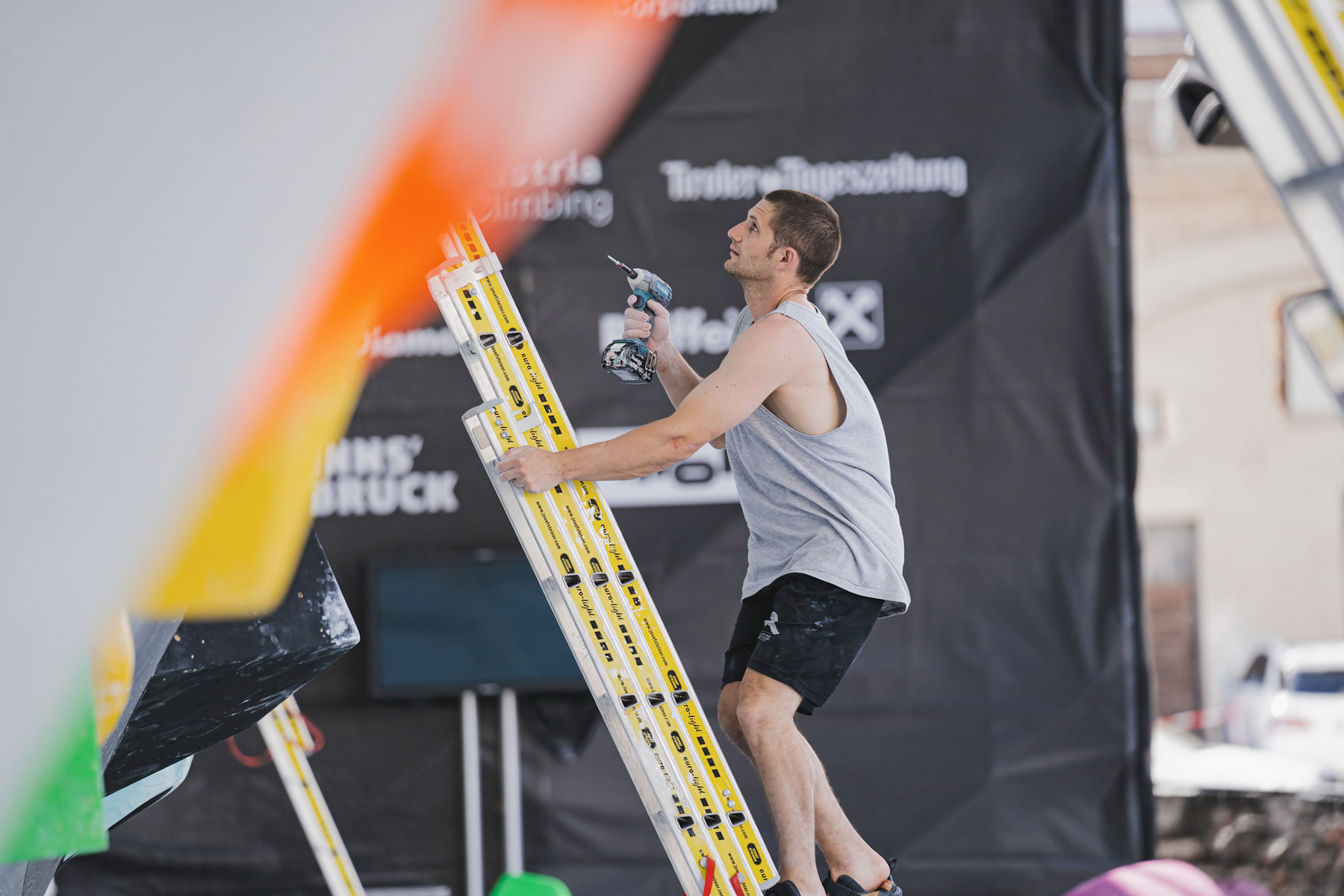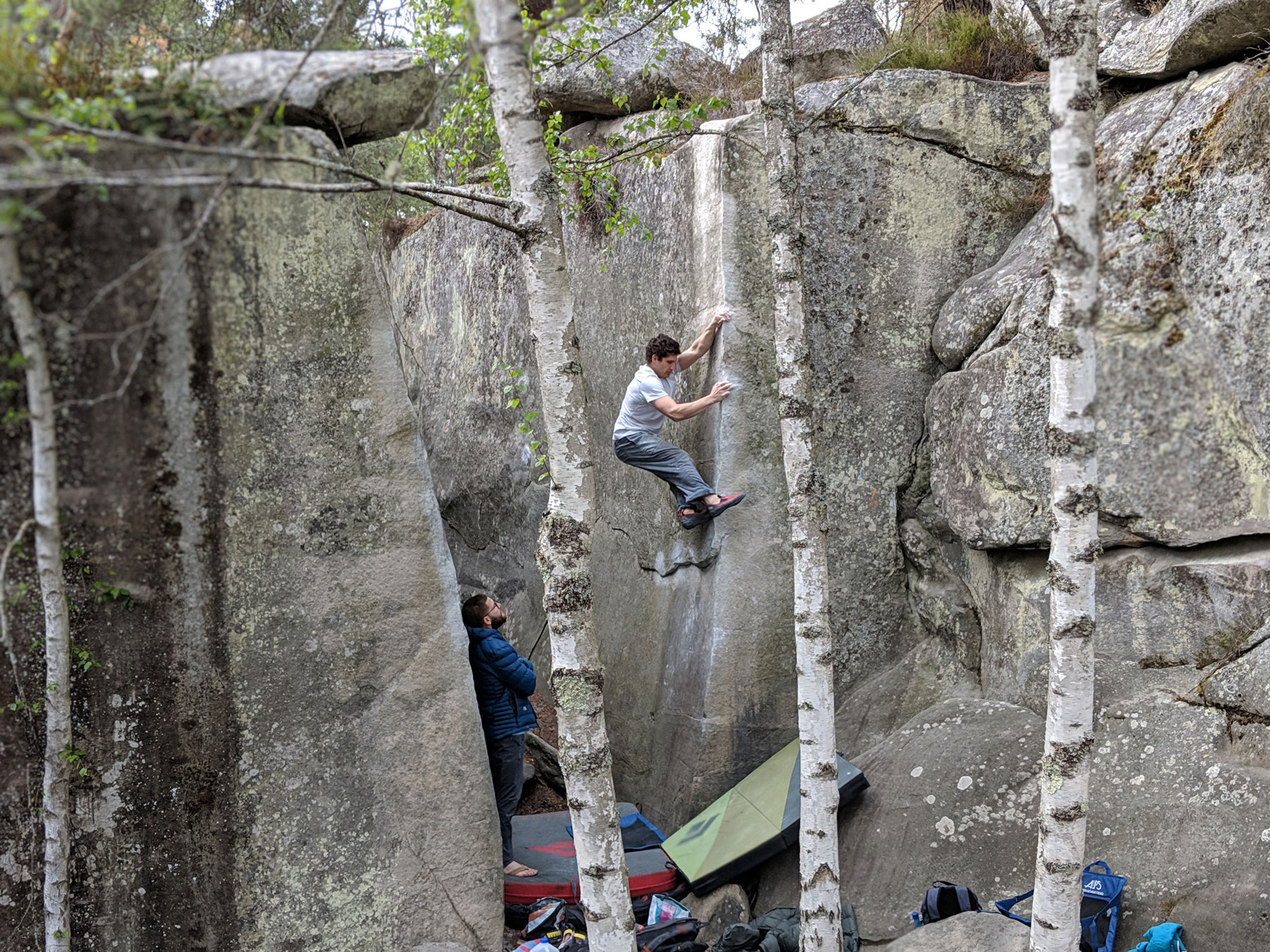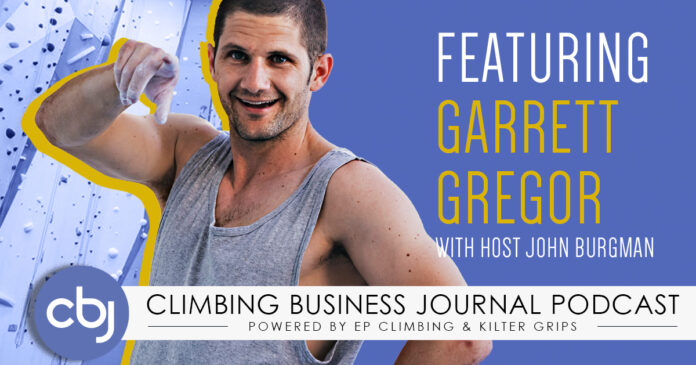
We at CBJ are beyond excited to begin our podcast with Garrett Gregor, a renowned routesetter and coach!
It’s almost hard to define Gregor’s role in the industry because he has done so much. In the past decade alone, he’s been a head coach at Team ABC, a routesetting director for climbing gyms, a routesetter for international competitions, and even one of the setters for the Tokyo Olympics. In working on the ground during these boom years for climbing, Gregor has accumulated a wealth of experience and wisdom as it pertains to not only the evolution of routesetting but also just the evolution of the climbing industry, in general. We get into all of those topics in this episode, and finish our conversation talking about the increase in professionalization that Gregor has noticed in the industry—as well as some strides that may still need to be made.
Follow Garrett Gregor: @garrettgregor
Thank you EP Climbing and Kilter Grips for your support!
And thank you Devin Dabney for your music!
Timestamps
0:00 – Intro
2:42 – With Gregor’s history, does routesetting still feel new?
6:51 – Where routesetting will continue to go, hopefully
15:23 – Coaching and routesetting
17:50 – Changes in setting over time
21:44 – Progression into dynamic, comp-style routesetting; responding to pushback
26:41 – What qualities make climbers elite?
30:15 – The potential of coaching elite qualities into kids
33:58 – Learning from Robyn Erbesfield-Raboutou
35:10 – Synergy between coach and competitor
36:02 – How Garrett came to set for the Olympics
38:50 – Team ABC as a large fraction of the Olympic Team
41:30 – Packaging the sport for a new audience and a new era
44:21 – Qualities of a Routesetting Dream Team
48:40 – Still being a valuable candidate for a setting team, without years of experience
50:47 – Closing
Abridged Transcript
BURGMAN: Does it feel like you’ve been working on the routesetting craft for a long time, or does it feel still pretty new to you?
GREGOR: I think in some ways it does feel like I’ve done this for a long time. I won’t say that it’s been easy; it’s taken a lot of determination, but also a perseverance in the face of ambiguity about “was this even going to be possible?” When I started setting, it was just a volunteer position at my local gym, and something that you did every six months or so when the owner of the gym felt like changing the routes over. There was no head routesetter. There was no director, certainly no director of setting. There were no routesetters. It was just people that came into the gym [who] were excited to put that thing up and challenge themselves and challenge the rest of their community…And there were many nights of “is this the right move?” I was sleeping on a floor, I was living on a couch, I was volunteering my time. And that took a lot of resilience to get to where I was. But I knew that was what I wanted to do; I knew that I was so passionate about the craft of routesetting, about climbing in general, about sharing that experience, that there was no doubt in my mind that that’s what I wanted to do.
All those things that are kind of hallmarks of professionalization in other industries, I don’t really see that in mass in climbing yet. And so I’m wondering if you’d gnaw on that a little bit with me?
I think there’s also some truth to the fact that we have made strides in where we are. Like I said, it was literally a part of the path that you volunteered, didn’t get paid, had to pay your own way to get there, you had to have the privilege of either having someone support you or being well off enough to make that happen. And fortunately, for USA Climbing that is no longer part of the path; for a lot of gym organizers, that’s no longer part of the path. But for a lot of federations, that’s embedded into the culture of how you do this. You don’t say no to opportunities. You are beholden to when this thing arises. You can’t say no. You have to give what it takes. You have to put in more hours because more hours makes a better product.
In your career, all the places you’ve been, the years that you’ve been at it, what have been some of the biggest changes that you have noticed?
Well one would just be the resources you have to work with. The walls that are constructed are vastly different. Where I grew up climbing, it was concrete plastered onto walls, and so not having that; having flatwood panels that you can put a variety of different shapes and sizes onto makes for a very different setting environment. The bounds and the confinements and the constraints of what you were limited to before changed dramatically. And to that point, the holds that have been shaped. If you look back to when people were just getting into the sport and breaking off real rocks and bolting those onto the sides of underpasses to where we were with initial urethane or resin holds to what we can do now with polyurethane and hollow back holds, these massive, massive shapes that can go onto the wall that are lighter and stronger. They’re more colorful, so they draw people in. Those are really big changes.
Otherwise, I’d say the tools that we have to work with as well. When I started, it was you picked up a T wrench and you got tendonitis pretty much immediately. And then we got to impacts or drills and then to impact drivers. And then now we have soft impacts that limit the vibration and limit the amount of decibels that you have to experience as a setter doing this day-to-day. There’s all sorts of tools. When I started setting on a rope, looking back, it was really horrible what we did. But you made it work and you like tied into a T-nut at the bottom of the wall and you just went for it. And you pulled up on a Grigri, which isn’t meant to be used that way. And now we have rigs and safety harnesses. And I think there’s been a lot of strides made into that professionalization because what can happen is very dangerous.

As a setter who has worked in all styles of setting, what do you say to people who push back against or criticize the comp style of setting?
There’s always this push in routesetting to try new things and to see what else you can put on the wall. When people first put wooden volumes on the wall it was like “what is that thing?” And I think, fundamentally, a lot of people don’t love new things. And that’s fair. Some people want to go out and just ski on blues all day. Some people want to go out and just hit the ball. That’s totally fine and I think, as a gym, you need to try to provide for all of that,= but also try to push what people have available to them. Because if it’s just one distinct style of setting, I think that’s a disservice to everyone…One of the things in coaching I used to have them really try to embrace is that sometimes what you don’t enjoy is what you need most. And sometimes suffering through it a little bit is really valuable to you as a climber, but also to you personally in helping you grow and realize you’re capable of more than you thought you were.
Is there a single aspect to the elite climbers of the world that you notice in all of them that maybe you don’t notice or you don’t notice to the same degree in most other climbers?
Persistence, dedication, resilience. Those are the qualities that I think make people good at what they do. And that is something you see in all of those individuals. I think back to seeing Colin [Duffy] in the gym even from a young age, and the intensity that he wanted to do well at this thing was evident from early on at seven years old. Everybody could see it; you could feel it.
Intensity is one bucket, and another bucket is adaptability. You see this in high level athletes across the board…You see people adapt and identify the things that they need to work on…You have to be willing to adapt in order to get better. You have to be willing to embrace the things that you’re not good at in order to progress.
If you’re wanting to help make a climber more adaptable, or you’re wanting to help make them more resilient, how would you work with that kid to improve those things?
As a coach, your job is to recognize what people’s desires are. Not everybody wants to be Colin Duffy. Not everybody wants to be [as dedicated] because it takes a lot of time and energy to do what they do. It is not something that comes easy. It’s not something that comes overnight. Progress is not linear, and there’s going to be setbacks along the way. You’re going to be unsure whether this is the right path. And so from a coach or a parent’s perspective, you can’t force that down anyone. I can’t make someone Colin Duffy [who] doesn’t want to be Colin Duffy.
And for those [who] do, one, putting them in the right environment. One of the things that was really unique and special about ABC was partially coincidence, partially location, partially the talent of coaches and routesetters that we had in the gym. All those factors [came] together at the right time, and the kids fed off of that and fed off of each other.

When you were working at Team ABC, what was the biggest thing that you learned from Robyn Erbesfield as a boss, as a mentor?
Robyn has that intensity, that’s for sure. I don’t know if you’ve ever spent time with Robyn, but she possesses that. And if there’s anything that you can give kids as coaches, as parents, it’s that intensity in the form that they know that you care so much about what they care about. Maybe that is the silver bullet. And that’s something that I learned from Robyn. And if you went with Robyn to a competition, you see it and you can feel it, that she really cares about how those kids do and what those kids want to do—and has so much love for each and every one of them.
I’m wondering if you had to hire a dream team of setters in the year 2023 and you’re going to set for a gym going forward with this crew, what are you looking for in those candidates?
There’s a couple of things that you look for as a chief route setter. One is going to be creativity, obviously, their ability to think outside the box and see what else is possible. Their attention to detail, being able to know the rules, to know what’s possible, what’s not possible in terms of the competition format itself. Their empathy to really understand what athletes go through…Not necessarily what’s challenging me, but how well can this individual, how well can this routesetter empathize with what these individuals, these competitors are going through. Because if they can’t understand or even have a semblance of an understanding of what it means to be in isolation, what it means to feel those nerves, then it makes it harder to do that job.
And then lastly, I think there’s an element of people that are fun to be around. That’s a hard one to quantify, obviously, because different teams are different. But that dynamic can really make or break the week of the competition. If the individuals aren’t gelling with one another, then it makes it harder to do the job. And so you want people that are going to motivate each other. You want people that are going to inspire each other and cheer each other on and make the week easier.

John Burgman is the author of High Drama, a book that chronicles the history of American competition climbing. He is a Fulbright journalism grant recipient and a former magazine editor. He holds a master’s degree from New York University and bachelor’s degree from Miami University. In addition to writing, he coaches a youth bouldering team. Follow him on Twitter @John_Burgman and Instagram @jbclimbs. Read our interview Meet John Burgman, U.S. Comp Climbing’s Top Journalist.









